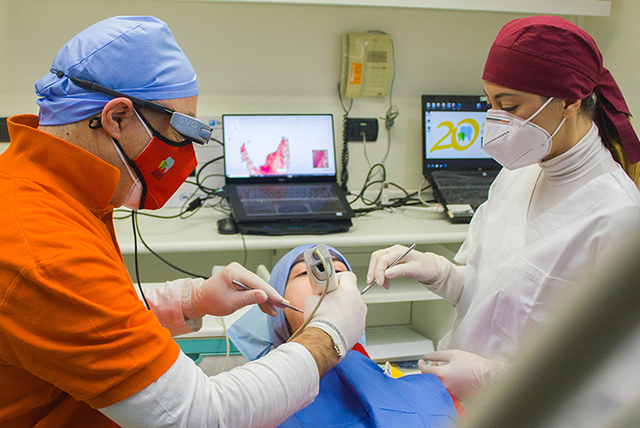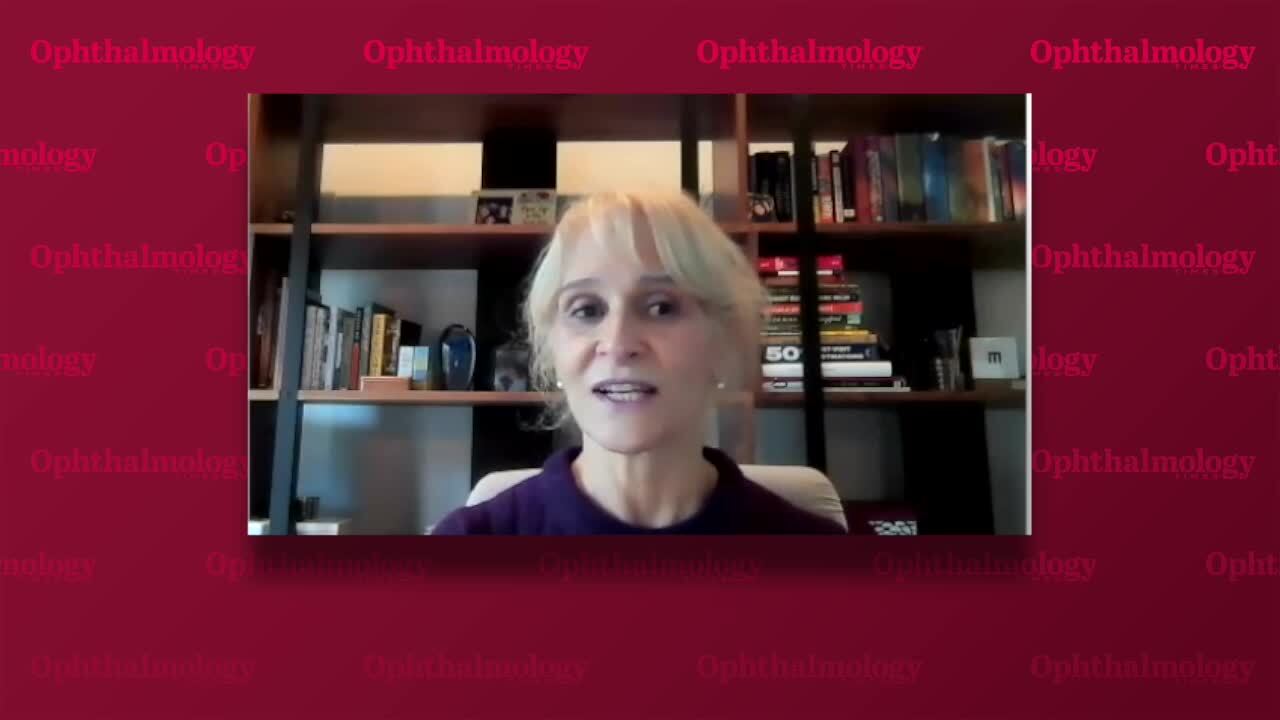:max_bytes(150000):strip_icc()/gettyimages-85648333-2000-89f69641e86a4068a1ecb427d99045a6.jpg)
Common Causes of Eye Problems
Perfectly healthy eyes—excellent vision and clear eyes, free of pain or other symptoms—are key to your health and well-being.
In 2020, the Centers for Disease Control and Prevention (CDC), in the United States, about 21 million people have vision problems. Many of those problems are relatively benign, such as mild nearsightedness. But other eye conditions, like glaucoma and age-related macular degeneration (AMD), can trigger vision loss and even blindness.
Although many people start developing eye diseases in middle age, their symptoms may not appear until later, when the condition is advanced and more difficult to treat. Learn more about eye problems, symptoms, and treatments that keep your eyes healthy.
Some people may not realize they have a vision problem until a healthcare provider detects it during a routine screening or a comprehensive dilated eye exam. A dilated eye exam checks your retina, optic nerve, eye pressure, and more.
The risk of developing an eye condition increases with age. But other factors can also increase your odds of experiencing vision problems. For example, a family history of glaucoma increases your risk of developing the disease. And people who have diabetes can develop a condition called diabetic retinopathy, which can damage their retinas.
By detecting eye diseases and treating them as soon as possible, healthcare providers could prevent many cases of vision loss and blindness.
In some cases, the symptoms of certain eye diseases overlap with others. For example, watery eyes could be a sign of conjunctivitis (pink eye), allergies, or a stye. Likewise, light sensitivity could indicate a cataract, migraine, or chalazion (a bump on the eyelid).
Other common symptoms of eye diseases include:
- Blurriness
- Discharge
- Flashes of light
- Irritation
- Light sensitivity
- Pain
- Tearing
- Vision loss
Resting your eyes might help ease those symptoms. Still, you should call a healthcare provider immediately if you’re experiencing severe or lasting pain.
Ophthalmologists treat refractive errors, like nearsightedness and farsightedness, with glasses or contacts. But a healthcare provider may treat severe eye diseases with a combination of medications or surgery.
In many cases, one of the best ways to protect your vision is having regular eye screenings, like comprehensive dilated eye exams. Detecting eye conditions in their early stages makes it possible to prevent vision loss from worsening with age.
Some of the most common treatments for eye diseases include:
- Refractive surgery: This is a procedure that helps correct refractive errors. One type of refractive surgery is LASIK.
- Corneal transplantation: This replaces either part or all of a damaged cornea.
- Oral steroid medications: These medicines treat inflammatory eye conditions like uveitis, a severe, potentially vision-damaging inflammation of the uvea (the middle layer of the eye).
Getting regular eye screenings to detect and correct any problems early is key to protecting your eye health. How often you get them depends on your age and risk factors. So, consult a healthcare provider to determine what’s best for you.
But there are other reasons to see an ophthalmologist immediately instead of waiting for your next appointment, including:
- Decreased vision
- Draining or redness of the eye
- Eye pain
- Double vision
- Floaters (specks that appear to float before your eyes)
- Circles (halos) around lights
- Flashes of light
In the United States, the most common eye issues are refractive errors, which include nearsightedness, farsightedness, astigmatism, and presbyopia (an inability to focus on objects up close). You can correct many of those vision problems with the help of eyeglasses, contacts, or surgery.
In addition to refractive errors, other eye conditions, some of which can cause eventual vision loss or blindness, include:
- Glaucoma
- Cataracts
- Conjunctivitis (pink eye)
- Macular degeneration
- Stye
- Red eye
Here’s what you should know about each eye condition, including symptoms and who’s most at risk.
Glaucoma
Glaucoma occurs when fluid pressure increases in the eye, damaging the optic nerve. People with glaucoma can lose their vision and eventually become blind. In fact, glaucoma is one of the leading causes of blindness globally.
The goal of treatment is to reduce pressure in the eye and prevent permanent vision loss. Treatments that help slow the disease’s progression include:
- Medicines, like eye drops
- Laser treatment
- Surgery
Additionally, a healthcare provider may recommend a combination of those methods.
People can develop glaucoma at any age, but it usually affects adults older than 60. People with a family history of glaucoma and those with diabetes also have an increased risk.
Cataracts
Cataracts cloud your eye’s lens, leading to blurry vision and eventual vision loss. As you age, the proteins in your eye clump together and cause cloudiness, making it challenging to see correctly.
Other symptoms of cataracts include:
- Seeing colors fade
- Difficulty seeing at night
- Sensitivity to light
- A “halo” that appears around lights
- Double vision
- Frequent changes in prescription glasses or contact lenses
An ophthalmologist can diagnose cataracts with a comprehensive eye exam and prescribe treatment. Usually, treatments for cataracts include prescription eyeglasses or surgery.
In 2020, the CDC estimated that about 30 million people had cataracts in the United States. Risk factors for cataracts include:
- Smoking
- Obesity
- High blood pressure
- Certain medications
- Diabetes
Conjunctivitis (Pink Eye)
Conjunctivitis is commonly known as pink eye. Causes of conjunctivitis include:
- Viruses
- Fungi
- Bacteria
- Allergens
- Toxins
- Irritants
- Contaminated contact lenses or solution
Besides the classic pink or red color that develops in the eye, conjunctivitis can also cause the following symptoms:
- Swelling of the eyelids
- Watery eyes
- Blurry vision
- Itching
- Burning
- Crusting
- Discharge that is white, yellow, or green
- Feeling like an object is stuck in your eye
- Sensitivity to light
- A lump that pops up in front of your ear
In some cases, conjunctivitis clears up on its own. And in the meantime, you can use a cool compress and artificial tears to help ease irritation. But if you’re experiencing pain, worsening symptoms, a sensitivity to light, and blurry vision, you should consult an ophthalmologist. They prescribe antiviral medication to treat viral conjunctivitis.
Factors that increase your risk of developing conjunctivitis include:
- Being around others who have it
- Wearing contact lenses
- Being exposed to an allergen
- Working in school or daycare since children are more likely than others to spread conjunctivitis
Macular Degeneration
Macular degeneration is an eye disease that damages your central vision. Macular degeneration includes age-related macular degeneration (AMD). There are two types of AMD. Wet AMD occurs when blood vessels grow under the retina. And dry AMD, which makes up about 90{a5ceed037b574a4d8c6b44a0a7290437cee40655417128da3b56d864fe64414f} of diagnoses, occurs when the retina thins over time.
Although early treatments, such as dietary supplements, may slow the progression of dry AMD, there is no cure for the disease. In the early stages, a healthcare provider may track your eye changes and encourage lifestyle changes. Or if you have wet AMD, a healthcare provider may prescribe injections, laser treatments, or both.
In 2019, the CDC reported that 19.8 million people in the United States had AMD, including 12.6{a5ceed037b574a4d8c6b44a0a7290437cee40655417128da3b56d864fe64414f} of adults over 40. People with a family history of AMD or smoke have a higher risk of the condition than others.
Stye
A stye, also called hordeolum, is a red, pimple-like bump. Styes usually appear on the edge of a person’s eyelid, where the oil glands become blocked. Some of the most common symptoms of styes include sensitivity to light, a sensation of grittiness, and watery eyes.
While many styes heal on their own, healthcare providers may prescribe antibiotics for ones that won’t go away. Or they may try draining styes. At home, you can try applying a warm washcloth to the bump.
Factors that increase your risk of styes include:
- Practicing poor hygiene
- Using old eye makeup
- Wearing contact lenses
- Having blepharitis, an inflammation of the eyelid
- Having health conditions such as rosacea, seborrheic dermatitis, or diabetes
Red Eye
Your eyes can appear red and bloodshot when the blood vessels become swollen. Dryness, allergies, or infections like conjunctivitis may cause the blood vessels to swell. Red eye is not a condition but a symptom of irritated eyes.
Often, red eye doesn’t signal an emergency. But on some occasions—for example, if eye pain or vision changes accompany your red eye—you should consult a healthcare provider.
Other Eye Conditions
Additionally, other eye conditions that people may experience include the following:
- Myopia: Also known as nearsightedness, myopia is one of the most common vision problems in the United States. Healthcare providers can treat myopia with eyeglasses, contacts, and surgery like LASIK.
- Chalazion: Sometimes mistaken for a stye, a chalazion is a red, swollen bump that occurs when the oil glands become clogged. A chalazion often goes away on its own.
- Color blindness: Although less common in women, as many as one in 12 men have color blindness, or difficulty distinguishing between shades of similar colors. There’s no cure for genetic color blindness. In contrast, healthcare providers may treat color blindness that results from a different, underlying cause. Some types of glasses and visual aids may also help.
- Floaters: These appear as squiggly spots in your vision. Changes in the eye’s vitreous humor, a jelly-like substance, cause floaters. Usually, floaters are harmless. But floaters can be serious if flashes of light accompany them. In that case, you may have posterior vitreous detachment, which could lead to a retinal tear or detachment. Seeking immediate medical attention is essential.
- Dry eye: This happens when your eyes cannot make enough tears to keep them moist. Dry eye can cause blurry vision, burning, or itchiness. Using artificial tears or prescription medicines can help alleviate discomfort. See a healthcare provider to determine and treat the cause if dry eye persists over time.
- Diabetic retinopathy: This is an eye disease that affects people with diabetes. Diabetic retinopathy occurs when high blood sugar levels damage the blood vessels in a person’s retina, leading to vision loss. Controlling your blood sugar levels can help treat and prevent the condition.
- Eye strain: Wearing the wrong prescription glasses or contact lenses can cause your eyes to feel tired or uncomfortable. Another culprit: staring at electronic screens. To avoid eye strain, try the 20-20-20 rule. Every 20 minutes, shift your eyes to look at something at least 20 feet away for at least 20 seconds.
- Acanthamoeba keratitis: The Acanthamoeba organism, a microscopic amoeba found in lakes, oceans, and soil, causes this rare, drug-resistant cornea infection. Symptoms include eye pain, redness, blurry vision, and sensitivity to light. The infection can result in permanent vision loss and blindness. See a healthcare provider right away if you experience symptoms. Also, avoid swimming in contact lenses, which allows the parasite to attach.
Many factors can affect your vision, especially as you age. So, having annual or biannual eye screenings is essential. If you don’t, talk to your healthcare professional about how often you need them. Early detection will give you a heads-up if you risk developing conditions that could later impact or destroy your vision.





